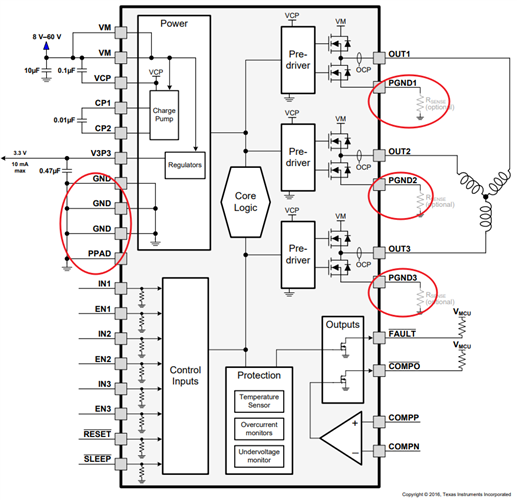Hi Team,
PGND is recommended to connect with GND when there is no Rsense. I have two questions, could you please hep explain? Thanks!
1. What are the risks when PGND is not connected to GND? Because several pieces are damaged when doing so by accident.
2. What's the internal connection between PGND and GND? Because the measured resistance between PGND and GND is 3 ohms with DRV8313 only, it seems that PGND and GND is connected internally, why is it designed like this?
Best Regards!
Hao


